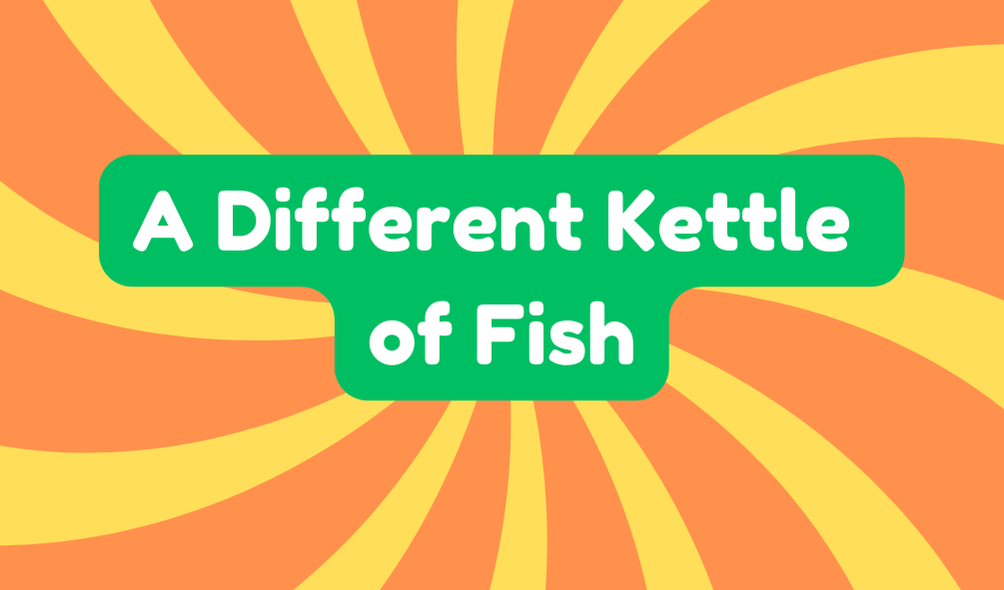The phrase "a different kettle of fish" refers to contrasting situations, emphasizing that not all scenarios are alike. It suggests complexity and nuance in language, urging careful consideration of context. The expression originated in the 19th century, often used to denote confusion. Its relevance persists today, as it effectively distinguishes between varying challenges. Understanding this phrase can enhance communication skills. By exploring its origins and usage, one can gain deeper insights into its implications.
Synonyms
Synonyms for the phrase "a different kettle of fish" often highlight the idea of contrasting situations or alternative contexts. Such synonyms exploration reveals a variety of idiomatic variations, each shedding light on nuanced differences. Consider these vivid examples:
- A horse of a different color
- A whole new ballgame
- Apples and oranges
- A different story altogether
These expressions encapsulate the essence of shifting perspectives, not just simple comparisons. Recognizing these variations fosters a deeper understanding of language's versatility and complexity, challenging readers to think critically about verbal nuances and their implications in daily conversations.
Example of Sentences
Understanding how to use phrases like "a different kettle of fish" in sentences can illuminate their meaning and context. By exploring various sentence variations, one can grasp the nuance effectively. Consider these contextual examples:
- "Moving from a small town to a bustling city is a different kettle of fish altogether."
- "Managing a project at work is a different kettle of fish than planning a family vacation."
- "Reading a novel and engaging in academic research are indeed a different kettle of fish."
- "Adopting a pet differs greatly from having a plant; it's truly a different kettle of fish."
Origin
The phrase "a different kettle of fish" has intriguing origins that merit exploration. Initially derived from "a kettle of fish," which signifies a muddled situation, the phrase evolved in the 19th century, gaining traction in Scotland and northern England. Conflicting interpretations abound regarding its precise lineage, yet its cultural significance is evident as it reflects the complexity of linguistic change. The first recorded usage appeared in the June 1847 Morning Advertiser, indicating a pivotal moment in phrase evolution. This transformation underscores how language adapts over time, making the phrase a fascinating study in both etymology and societal context.
Collocations
Collocations play a critical role in understanding how language is used in context, particularly with phrases like "a different kettle of fish." These pairings, often seen in everyday conversation, can reveal nuances in meaning that may not be immediately obvious. Kettle variations illustrate the diversity of expression, while fish idioms encapsulate specific sentiments. For instance:
- A kettle of fish – a confusing situation.
- A pretty kettle of fish – a delightful mess.
- A fish out of water – feeling uncomfortable.
- A big fish in a small pond – someone prominent in a limited space.
Understanding these connections enhances language mastery.
How to Use in Everyday Language
How can one effectively incorporate the phrase "a different kettle of fish" into everyday conversations? This idiom serves to emphasize contextual nuances, distinguishing one scenario from another. To utilize it, one might say, "Planning a weekend trip is exciting, but managing a cross-country move is a different kettle of fish." By making such conversational applications, individuals can communicate shifts in complexity or significance. However, caution is essential; overuse may dilute its impact. Therefore, employing the phrase with deliberation enhances both clarity and engagement, fostering a richer dialogue while highlighting the distinctiveness of various situations or challenges faced.
Why Is It Still Relevant Today?
Modern communication thrives on the ability to articulate complex ideas clearly. The phrase "a different kettle of fish" remains relevant today due to its cultural significance and adaptability in a rapidly evolving modern context. As society faces multifaceted challenges, this expression effectively distinguishes between contrasting situations, enabling nuanced discussions. Its historical roots enrich contemporary dialogue, reminding individuals of the complexities inherent in various issues. While some may overlook its importance, the phrase underscores the necessity of clarity in communication. Ultimately, it serves as a reminder that perspectives can shift, furthering understanding within an ever-changing landscape of ideas and viewpoints.







